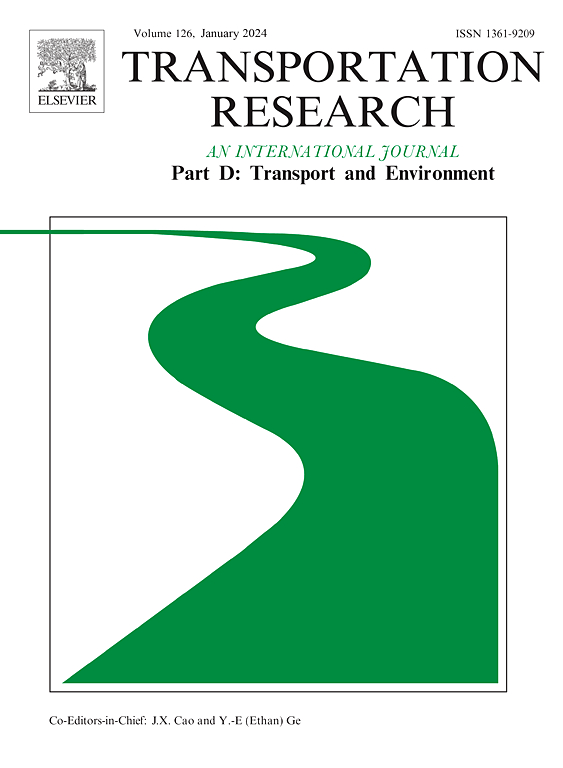Transportation sector’s carbon emission pressure in Chinese provinces during carbon peak
IF 7.3
1区 工程技术
Q1 ENVIRONMENTAL STUDIES
Transportation Research Part D-transport and Environment
Pub Date : 2025-02-17
DOI:10.1016/j.trd.2025.104606
引用次数: 0
Abstract
This paper introduces a new method for ex-ante assessment of carbon emission pressure (CEP), incorporating carbon quotas allocation and emission demand forecasting while considering efficiency, fairness, technological progress, regional production technology heterogeneity, and expected production scale. The method is applied to empirically investigate the low-carbon production efficiency, spatial distribution, and dynamic trends of CEPs in 30 Chinese provinces’ transportation sectors during the carbon peak period. Results show that: (1) western provinces and populous provinces are the main sources of inefficiency in China’s low-carbon transportation efforts; (2) inland hub provinces like Hebei and Hubei will see low and steadily decreasing CEPs; (3) eastern coastal provinces with large transportation scale, resource-exporting central provinces, and western provinces will face high and rising CEPs for various reasons. The method’s validity and accuracy are verified through comparison, and policy implications are provided to support a differentiated low-carbon transition in China’s transportation sector.
碳峰值时期中国各省交通运输行业碳排放压力分析
在考虑效率、公平、技术进步、区域生产技术异质性和预期生产规模等因素的基础上,提出了一种新的碳排放压力事前评估方法,将碳配额分配和排放需求预测相结合。运用该方法对中国30个省区交通运输行业低碳生产效率、空间分布及其动态趋势进行了实证研究。结果表明:(1)西部大省和人口大省是中国低碳交通低效的主要来源;(2)河北、湖北等内陆枢纽省份平均物价指数处于低位且持续下降;(3)交通运输规模较大的东部沿海省份、资源出口的中部省份和西部省份由于各种原因将面临较高且不断上升的cep。通过比较验证了该方法的有效性和准确性,并为支持中国交通运输行业差异化低碳转型提供了政策启示。
本文章由计算机程序翻译,如有差异,请以英文原文为准。
求助全文
约1分钟内获得全文
求助全文
来源期刊
CiteScore
14.40
自引率
9.20%
发文量
314
审稿时长
39 days
期刊介绍:
Transportation Research Part D: Transport and Environment focuses on original research exploring the environmental impacts of transportation, policy responses to these impacts, and their implications for transportation system design, planning, and management. The journal comprehensively covers the interaction between transportation and the environment, ranging from local effects on specific geographical areas to global implications such as natural resource depletion and atmospheric pollution.
We welcome research papers across all transportation modes, including maritime, air, and land transportation, assessing their environmental impacts broadly. Papers addressing both mobile aspects and transportation infrastructure are considered. The journal prioritizes empirical findings and policy responses of regulatory, planning, technical, or fiscal nature. Articles are policy-driven, accessible, and applicable to readers from diverse disciplines, emphasizing relevance and practicality. We encourage interdisciplinary submissions and welcome contributions from economically developing and advanced countries alike, reflecting our international orientation.

 求助内容:
求助内容: 应助结果提醒方式:
应助结果提醒方式:


